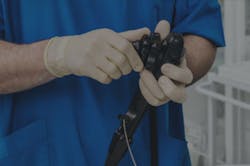Missing links in manufacturer instructions-for-use can lead to process kinks
To wit, IFUs have been blamed in part for a rash of infections that experts have linked to poorly cleaned devices and then run through high-level disinfection or sterilization units before being returned to the surgical suite.
As questions swirled about device design and whether IFUs were followed completely, outcry about the content and composition of IFUs bubbled to the surface. Among the complaints: They ranged from being arduously long and complex, akin to the fine print in bank and credit card statements, to lacking detail and full of vagueness and subject to individual interpretation.
Standardized they are not. Customized, easy-to-read, four-color descriptive notecards also have yet to be accepted.
Healthcare Purchasing News reached out to a group of sterile processing experts for their insights on some of the key misunderstood or overlooked aspects of manufacturer IFUs for device cleaning, disinfecting, sterilizing and use, why they’re so difficult to grasp and how SPD might master the process.
Stephen Kovach, Director of Education, Healthmark Industries
The real importance of following the IFU is that the manufacturers have taken the time and effort to perform the validation studies to establish a way to properly process that specific medical device. If a staff person or a facility decided not to follow the IFU, they have put the patient, themselves and their facility at risk. If that medical device is not clean and functional, and therefore not sterilized or disinfected properly, issues will arise later.
If they have deviated from the IFU, then they have changed the process without any scientific data to back up their deviation from the validated method.
Some of the key areas that are misunderstood are:
- Pre-treatment at the point of use is not being done (ask anybody who works in SPD and they will tell you the majority of the instruments being returned are not moist/wet).
- Not all devices are being processed in the completely open and disassembled (i.e., taken-apart) configuration.
- Next is visual clean – what is visually clean? This is often not well established and specified by the facility.
- Last, and the most terrifying, is that people think they can sterilize anything even if it is not clean. They think, “Sterilize it and it will all be okay.” Even after all of this time we say “if it is not clean, you canno
- t sterilize it.” Cleaning is the fundamental step in the sterilization process.
Charles Hughes, Vice President, Infection Prevention Consulting Services, Crosstex/SPSmedical, a Cantel Medical Company
- It is important to establish a policy and procedure that states you have to review the written IFU prior to purchasing, borrowing or trialing any new reusable medical device.
- Also, establish a policy and procedure that requires your device manufacturers to update you when changes are made to their current IFUs.
- Enforce all policy and procedures, especially when it comes to borrowed trays arriving on time and with IFUs.
- Confirm that you have all your IFUs, and if not, have your Educator secure those that are missing and/or outdated. In many cases, borrowed instruments, also referred to as loaners, come without validated IFUs, which means reprocessing must be delayed until the IFUs are provided. Without the IFU, the CS/SPD personnel have to guess how to properly reprocess the devices, which is a patient safety issue.
- Hospitals should review all IFUs and confirm there are no conflicts with their current reprocessing steps. If there is an issue, the hospital must secure the proper resources or must contact the device manufacturer and ask them to revalidate their IFUs to the hospital’s standard reprocessing procedures. Some device manufacturers simply don’t know the chaos their IFUs cause reprocessing departments, and are willing to revalidate.
- Finally, to assure sterility of instrumentation, the CS/SPD can use Class 5 integrators, which can provide an extra level of assurance when documenting the effectiveness of the sterilization cycle.
Crit Fisher, Director, Field Operations, Protection1, KARL STORZ Endoscopy-America Inc.
Endoscopes, both rigid and flexible, are generally viewed as critical devices that aid in the diagnosis and treatment of patients. Because of their delicate yet precise characteristics, their appropriate care and handling represents a significant responsibility for staff involved in processing, transporting and managing these instruments. It cannot be overstated that time dedicated to providing education and training in carefully following the product instructions for use (IFUs) represents a key investment in safeguarding your patients and extending the useful life of your endoscopes.
When reviewing the IFUs for an endoscope with staff, or as the instructions are being followed, there are certain critical points that easily can be overlooked.
- First and foremost, it is important to understand and execute the manufacturers’ IFUs precisely and completely to help avoid accidental damage to devices. Often, when we evaluate customers and their practices, it is apparent that they have not followed the IFUs as they were written.
- The importance of using pH-neutral cleaners, diluted to the proper concentration cannot be emphasized enough. Ensuring proper dilution is used is important, as simply using more cleaner is not necessarily better for cleaning purposes. It is just as important to follow the manufacturer recommendation of cleaning detergents as manufacturers have to select and specify a detergent when going through the 510(k) process.
- It is equally important to ensure that detergent and rinse water are frequently replaced. Washing the very first scope contaminates the rinse water. And it is not uncommon to see rinse water that is cloudy and murky by the end of the day. Rinsing is a key processing step and it is essential to ensure that any residual detergent is completely rinsed.
Every scope, from every manufacturer, is a unique device as defined by its proprietary design, materials, adhesives and manufacturing processes. This is why great care must be exercised to closely follow each manufacturer’s IFUs. Nevertheless, there are certain common steps that should always be followed:
- Flush of working channels and ports with syringes
- Use recommended cleaning brushes
- Use soft, clean, lint-free cloths and dry the shaft by patting instead of using a pulling motion down the shaft
- Maintain scopes in a neutral position throughout transport, cleaning, sterilization and storage
- Use dedicated and validated storage containers or trays
Lisa Wakeman BS, CHL, CIS, CRCST, MBTI National Director of Education, Circle of Care, Fresno, TX
- Facilities must adapt to the increasing changes in medical practice and embrace technological advances that provide better levels of sterility assurance.
- Alternative methods of sterilization are not always considered when manufacturers conduct validation testing for IFUs, therefore causing additional end-user ethical dilemmas in reference to Immediate-Use Steam Sterilization (IUSS) and instrument availability.
- Manufacturers are not always compliant with providing up-to-date research to improve standardization.
- Validation testing is costly and time-consuming, making manufacturers less likely to adapt their IFUs in order to accommodate the needs of end users for versatility in sterilization methods for strategic problem solving and the reduction of IUSS. In other words, SPD technicians need options to meet turnover needs quickly, but also need standards so that compliance is streamlined.
- From a disinfection standpoint, manufacturers must place as great an emphasis on the cleaning challenges that technicians encounter as they do the function and durability of devices.
- IFU compliance and a commitment to patient safety is everyone’s responsibility. All roles involved must share this same professional code of conduct in order to serve the greater good.
Jean Sargent, Principal, Sargent Healthcare Strategies
- Lack of capabilities: IFUs contain instructions requiring automation or processing that a facility may not have or have the capability of procuring.
- Vague instructions: Instructions may indicate per facility policy and procedure – what if the policy and procedure is incorrect for this product?
- Processing occurring in non-SPD environment: The IFUs are so generic that the information may not cover how to accomplish the IFU in different settings, such as physician offices or clinics, where personnel are not trained appropriately to understand the ramifications of not following the IFU.
- Physician use is harsh on product: The IFU may not take into consideration the harm caused to the instrument and the need for detailed instructions and preventive maintenance to prolong the life of the product.
- Extended cycle times for which the equipment is not approved/tested: Although the IFU indicates an extended cycle time, the equipment may not be tested and approved for use in such a manner.
- Testing in a controlled environment: Manufacturer testing occurs within a controlled test environment, so the IFU may not take into consideration the environment in which SPD functions.
Cause and effect
Sterile processing experts acknowledged that SPD staff can have issues with IFUs as written – whether vague or verbose. But why?
Sargent argued it’s about volume.
“There are so many IFUs in one department that expecting each person to remember each nuance is next to impossible,” Sargent told HPN. “Based on the facility’s configuration, one might be able to have techs that are specific to a service such as orthopedics, which limits their need to keep top of mind each instruction.”
Kovach agreed wholeheartedly, pointing out the idea of “visually clean” as a primary culprit.
“IFUs are challenging to understand because there are multiple steps, and often they are written in a very complex format,” he noted. “People performing reprocessing may not totally understand that missing any step is a potential problem or concern. This then leads to defining visually clean. You will find this statement in almost every IFU: ‘Visually examine each device for cleanliness. If visible soil remains, repeat cleaning procedure.’ Because ‘visually clean’ is subjective, some people think a ‘little spot’ is okay and the sterilization process will take care of it.
“Next, people think cleaning is simple brush, flush and brush and go to the next step, when in reality it is all of the steps in the IFU that, if followed, will lead to a clean and functional medical device,” he continued. “Therefore, changing or missing some of the steps can result in a unclean and/or non-functional medical device.”
Brianne Flesher, Flexible Scope Division Manager, Mobile Instrument Service & Repair Inc.
“There are many facets of cleaning, disinfecting and sterilizing reusable device instructions for use, which include not only the IFU provided by the manufacturer of the device itself but also for the equipment being used to reprocess the reusable equipment,” Flesher said. “Most endoscopes contain an excess of 25 pages of instructions to properly reprocess the equipment. If adequate time isn’t spent educating reprocessing staff on why each step must be strictly adhered to, steps may get skipped or performed inadequately. Lack of understanding of the reusable devices, along with the reprocessing equipment, can create the opportunity for misunderstanding.”
For Hughes, it’s understanding.
“People do not know what they do not know! Scientific advances in diagnostic and therapeutic medicine have led to the development of new and sophisticated reusable medical devices that come with increasingly complex and comprehensive IFUs. Not everyone outside the CSSD knows that reprocessing IFUs have become very detailed and time-consuming for many of these sophisticated devices. It is important to collect the manufacturer’s IFU, especially for the most complex devices, and share them with the OR and Materials Manageme
Fisher said it’s the time crunch, which can erroneously invite “sacred cow” procedures to be used.
“There can be tremendous stress placed on staff to quickly turn flexible endoscopes over for the next patient,” he noted. “SPD staff members in some facilities have told us that certain processes continue to be followed because ‘that is the way it’s always been done.’ Each device should be considered as being distinctive in its own way. The manufacturer’s IFU specific to that flexible endoscope should be thoroughly and precisely followed — rather than following steps that have been used with existing or previous devices.”
Diagnosis and treatment
So what can SPD management and staff members do to make some sense of manufacturer IFUs? Maybe this is where the sales representative comes in.
Sargent advocated relying on the sales rep to support education and quality assurance of the processes, as well as automated systems.
“Although we talk about removing the rep from the process, there are times when it makes sense to use their skills to support the departments,” she insisted. “Use of electronic systems also supports the staff to ensure they are remembering each step of each instrument they are processing. Systems such as instrument tracking or IFU documentation are great to have on hand.”
Karl Storz’s Fisher pointed to the reps and associations for guidance.
“The service representatives of the endoscope’s original manufacturer can be a valuable resource in this regard,” he said. “Our service personnel believe they have a duty to assist SPD staff in fully understanding each step of the IFUs, as well as the critical importance of following them to completion.
“Additionally, we believe that SPD personnel would clearly benefit if organizations such as IAHCSMM were to engage more fully by offering state, regional and even national opportunities to take part in educational opportunities,” he continued. “Effective and ongoing training and education are essential to maintaining an SPD staff that achieves its principal goals.”
Fisher posited a single go-to person might be warranted, too.
“Hospital SPDs could benefit from assigning someone to function as the ‘Compliance Officer’ who would represent a resource that staff members could consistently turn to for guidance and answer to questions,” he added.
Richard W. Schule, FAST, CST, FCS, CRCST, CHMMC, CIS, CHL, AGTS, Director, Clinical Education, STERIS Corp.
Schule recommended a thorough document evaluation and review before any purchasing or process implementation.
“Organizations should take time to review, ask questions, update, and retrain on product evaluation requirements prior to purchase,” Schule noted. “Depending on the normative references used by the sterile processing department as a part of their quality management system, there are a number of resources that speak to product evaluation prior to purchase.”
For example, documents such as AORN’s 2016 Guidelines for Perioperative Practice, Guideline for Product Selection, pgs. 177-184 and ISO 13485, Section 12, New Product Evaluation, both speak to review of manufacturer documents, particularly IFUs prior to purchase, according to Schule.
Other sources to reference include ISO quality management system (QMS) standards, he added. Both ISO 9001 and ISO 13485, Section 7.4 Purchasing, speak to requirements of a quality management system, “The organization shall establish criteria for the evaluation and selection of suppliers.”
“A systematic approach to evaluating products, including educating, training and verifying competency on the OEM’s IFU prior to implementation, will help to prevent unnecessary confusion,” he added.
“Management must understand that for the IFU to be followed correctly, the staff must have the right tools as outlined in the IFU,” Healthmark’s Kovach emphasized. “Staff must understand how to use those tools properly. The best example is that of the shavers. Do you know that many of the orthopedic shavers require three specific brushes to clean them properly? Yes, three brushes. In an unscientific poll [I regularly take when I speak at conferences], the majority – more than 50 percent – of people raise their hands to demonstrate that they are unaware they need three brushes to clean the shaver as per the IFU. They say that they had no idea.”
Kovach further noted that with the shaver, enhanced visual inspection is needed to look inside two specific areas of the device to determine cleanliness, but his audience polls show more than half don’t comply.
“Please keep in mind that medical facilities have known for at least six years that manufacturers have recommended using some type of borescope to visually inspect orthopedic shavers,” he added. “Why is it not being done?”
Routine refresher training may be necessary, according to Mobile Instrument’s Flesher.
“In order to create full understanding of all IFUs, whether reusable devices or reprocessing equipment and methods, training should be provided to staff who handle scopes,” she said. “This should start with compatibility of AERs and enzymatic cleaners being used on the scopes and continue on to the device itself and the steps required to properly clean the scopes. Confirmation of compatibility in enzymatic cleaners, AERs and scopes is a great starting point. The more training SPD staff receives the higher their success rate will be. We support routine refresher courses so that staff are reminded of proper processes and protocols.”
Reprocessing blueprint to fight infection
The delivery of non-sterile instruments has been documented by the CDC as one of the causes for surgical site infections and therefore, compliance with best practices is critical. Following the best practice steps below for instrument reprocessing, in conjunction with the validated instructions for use (IFU) provided by the instrument manufacturers, will minimize the patient’s risk for infection.
- Point of use: Remove gross soil during the surgical procedure, contain instruments properly during transport and apply pre-soak solution to keep instruments moist.
- Decontamination: Wearing appropriate PPE, clean soiled instruments as soon as possible in a designated area according to their written IFU.
- Inspect and package: Inspect each instrument for cleanliness and function, package in FDA-cleared pouches, wrappers and/or rigid sterilization containers.
- Sterilization: Load the sterilizer properly and confirm the cycle type and parameters meet each instrument’s written IFU. After processing, allow packages to cool to room temperature (75°F) prior to handling.
- Storage and delivery: Store in a dedicated area that is clean and restricts traffic. Prior to distribution, inspect each package for damage and proper external chemical indicator color change.
- Quality assurance: Verify sterilization cycle parameters were met by the use of physical, chemical and biological indicators. Sterilizer printouts should be signed, chemical indicators should be visually inspected and biological indicators should be grown out to confirm spore death. Use the proper internal chemical indicator and biological indicator for your process and sterilizer cycle parameters.
Be sure each of the instrument reprocessing steps are understood and followed by all health care personnel who handle reusable devices.
Source: Charles Hughes, Vice President, Infection Prevention Consulting Services, Crosstex/SPSmedical, a Cantel Medical Company, October 2016
About the Author
Rick Dana Barlow
Senior Editor
Rick Dana Barlow is Senior Editor for Healthcare Purchasing News, an Endeavor Business Media publication. He can be reached at [email protected].








